The gems of Matsue
| Travel Reports by Chashitsu | view profile of Chashitsu |
| previous post |
| next post |
| Note: The opinions and views expressed in this user report are those of the individual author and do not necessarily reflect the opinions and views of japan-guide.com. |
November 3, 2014 - The gems of Matsue
We caught an early train to nearby Yasugi and picked up the minibus to the Adachi Museum. The Adachi Museum or Art founded in recent times by Adachi Zenko is a masterpiece of paintings and ceramics on the inside and garden ügartüh on the outside, all viewed from within the museum. The garden is ranked by the US Journal of Japanese Gardens as the top Sukiya Garden in Japan. Personally, although this is a garden of great beauty, it a lacks soul and can not be fully engaged by the viewer. The gardens include the visitors garden, a dry garden of massive scale, a moss garden full of morning freshness, the main dry landscape garden with its pine forest and mountain rock arrangement with flowing river of gravel, the excellent pond garden, the distant waterfall on the hill some kilometre behind and the white gravel and pine garden inspired by the painting "Hakusa Seisho" by Yokoyama Taikan. There is also a lovely tea garden and tea house serving tea if required.


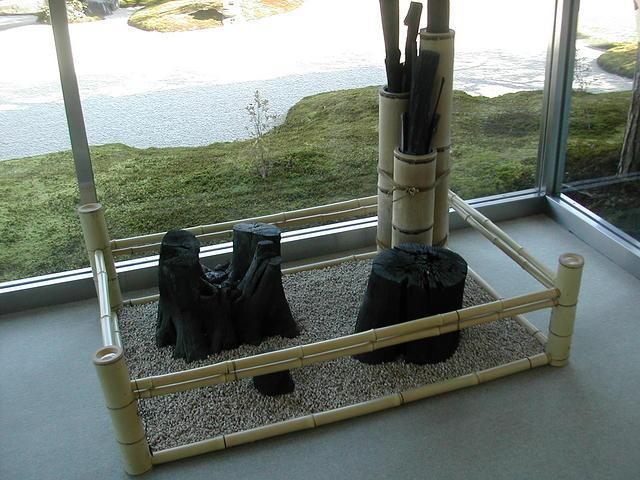
After exploring Matsue (the water city), known for it's rivers and canals, the night before, we took an early morning bus to Daikon-shima island to see the garden of Yuushi-en. Daikon-shima is an ancient collapsed caldera with rich soils, renowned for it's ginseng and peonies. Here they grow many varieties, some of which are in flower the year round. Despite the winter snows, the peonies still flower under rice straw üghatsüh. There is a large pond with islands and hills in what was flat fertile fields with many excellent manicured pine trees. We strolled around these extensive modern gardens with several substantial waterfalls, streams, ravines, marshy iris beds and a peony house. So meticulous is the design we witnessed a pine tree being moved but a mere 5 in tilt and another few degrees of twist to get the presentation just right. The dry landscape garden is excellent. A truly fabulous garden, meticulously kept but able to engage with the garden rather than just look at it. One of the best of the whole tour.
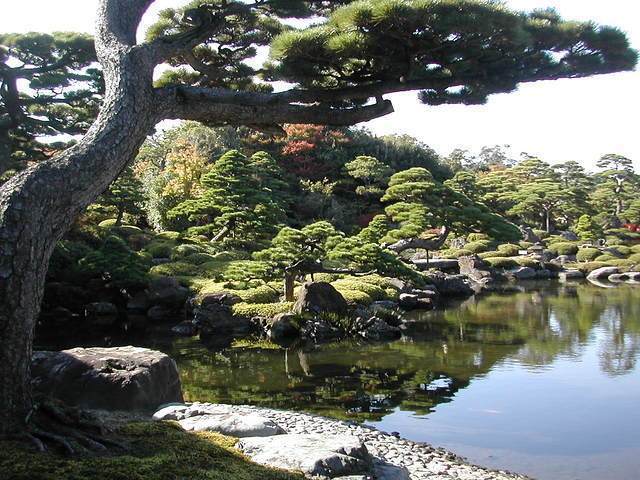
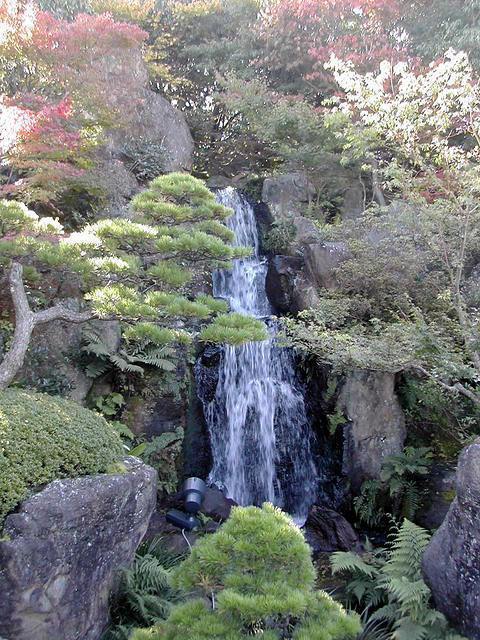
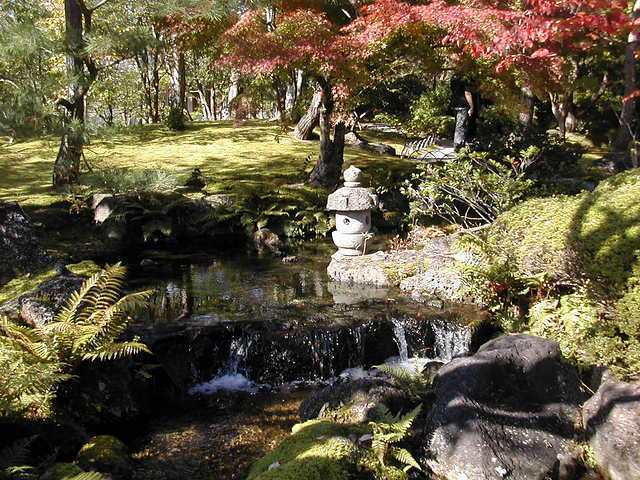
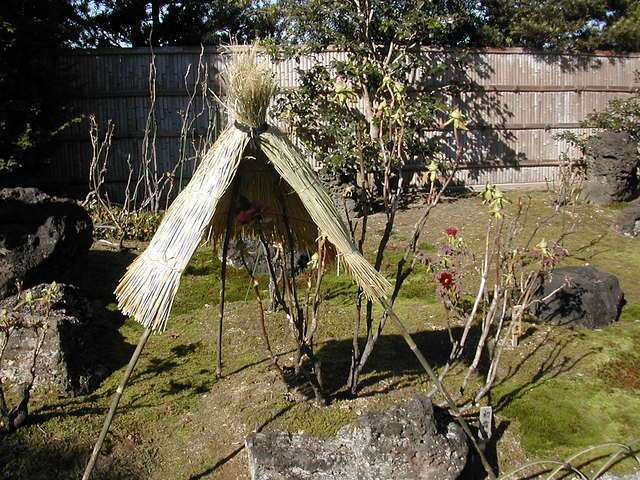
We returned to Matsue for lunch and to enjoy some of the local attractions in town, calling in at the small Mafu shrine en route to Matsue castle, one of the 12 remaining original castles, built much about the same time as Himeji. It is the second largest but clad in waterproof timbers, painted black. The castle contains some of the anti-siege weaponry. The ridge ends of the upper storey or the watch tower are finished with bronze shachi-hoko ? imaginary sea animal with a body of a fish but the head of a tiger, similar to that seen at Himeji castle.

Walking through the castle grounds, the back entrance leads to Lafcadio Hearn's residence and museum. Lafcadio Hearn was an Irish Chronicler and writer who lived in Japan at the turn of the 20th century, whose many books confirmed him as the leading interpreter of Japanese culture of his time. His modest house has a charming garden viewed from the engawa and the adjacent museum houses many artefacts and personal effects. A little further along the road is a traditional Buke Yashiki style house of a middle ranking samurai family, the Shiomi family, one of the chief retainers of the Matsudaira clan who ruled this province. The property includes a front gate with servants quarters and palaquin barn with the main house displaying weapons and utensils used in feudal times.
Up on the hill behind the samurai quarters lies the renowned Meimei-an tea house.
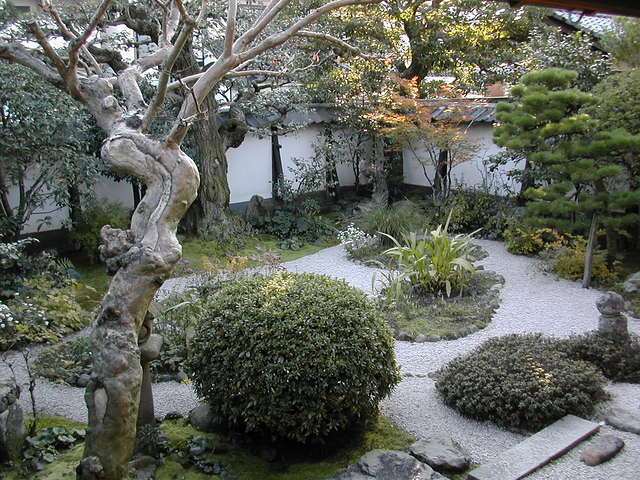
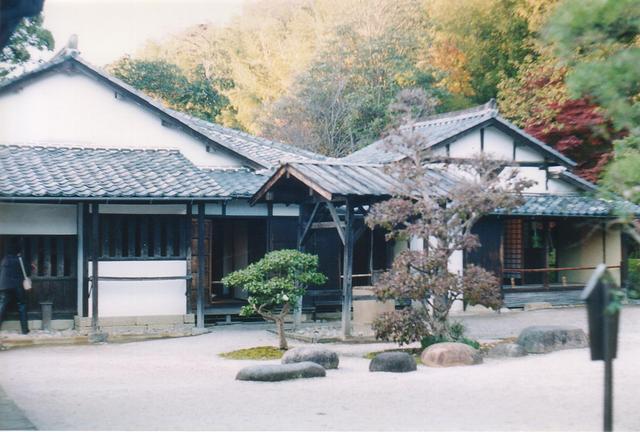
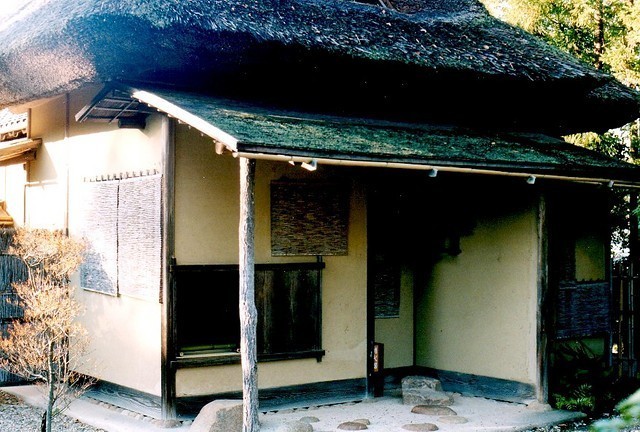
We returned to Matsue for lunch and visited the lesser known temples of Gessho-ji, the burial ground of the Matsudaira clan. The temple contains a huge stone tortoise carrying an equally large tablet of stone. The temple has a small rather pleasant garden. The temple of Tenrin-ji was not open but of limited interest. We returned to the centre and called in at a riverside Minami-kan Ryokan (Japanese style hotel) with the purpose of having a coffee and seeing the garden. The hotel was not open for such but on presentation of our Japanese business cards we were proudly shown the immaculate dry landscape garden and tea house. The gardener welcomed us into the garden itself to take photos as he had disturbed the gravel himself. The picture shows a traditional water basin arrangement with standing rock, splash stones and Kasuga lantern. The copper roofed tea house has its' own small garden with stepping stone path, four-eyed fence well pruned pines. A worthy find not seen by the general public.
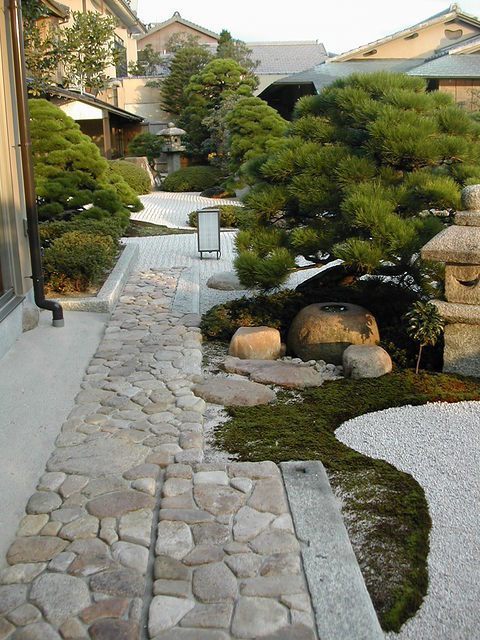

As it was getting late in the afternoon we rushed off across town to Kishikoen park to watch the setting sun over the pine clad island some distance from the shore.

| previous post |
| next post |
|
List of Posts:
2017/07/25 - Japan's tectonic landscape reflected in the gardens 2017/07/15 - Flora of Japan 2016/04/27 - Time in Asakusa 2016/04/25 - Kakunodate 2016/04/23 - A Thousand Cranes 2016/04/22 - Castle in the Clouds 2016/04/21 - The beauty of Koraku-en 2016/04/20 - Far from the Madding Kyoto Crowds - Part 1 2016/04/20 - Far from the Madding Kyoto Crowds - Part 2 2016/04/18 - A Day in the Mountains 2016/04/17 - Delights of Hikone 2016/04/16 - Nara Revisited 2015/01/03 - Kamakura temples and gardens 2015/01/01 - Takayama Temple Trail 2014/12/29 - Kurama - Kibune hiking trail 2014/11/10 - A visit to Himeji 2014/11/05 - Shigemori Mirei - The Rebel in the Garden 2014/11/04 - Arashiyama and nearby sights 2014/11/03 - The less visited sites of Nara 2014/11/03 - The gems of Matsue 2014/10/31 - Agon-shu Monastery 2014/10/30 - In the footsteps of the Shogun 2014/10/30 - Tale of the Genji |
